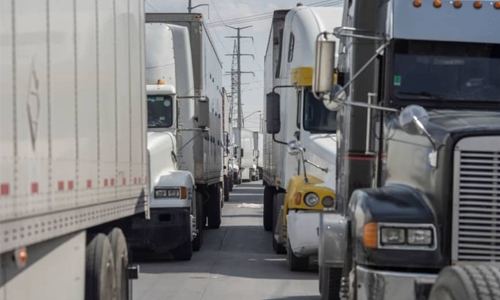The trade wars are here. Are trade blocs next?
We may be on the cusp of an upheaval in global trade. Since World War II, the international trading system has operated on the premise of “most-favored nation (MFN),” meaning that concessions granted to one country must be extended to all countries in the system. The trade standoff between the United States and China suggests that this approach is giving way to the emergence of rival economic blocs that, increasingly, control international trade and investment.
In a fascinating new paper, economists David S. Jacks and Dennis Novy argue that today’s contentious trade disputes recall what happened during the Great Depression of the 1930s. Led by Britain and Germany, competing trading blocs governed large portions of global commerce. Something similar is happening now. Witness President Trump’s threat to impose a 5 percent tariff on Mexican imports as a way of reducing illegal immigration. “The trade wars of the present day [may lead] . . . to a reorientation of world trade around China- and U.S.-centric trade blocs,” they write. To be sure, MFN was not always followed with religious fervor.
Exceptions occurred. Practical politics often collided with economic principle. Still, the United States was the world’s major economic power and the main architect of the postwar trading system, and it supported MFN. The traditional American view has been that trade liberalization (fewer tariffs and quotas) benefits all countries — importers and exporters alike. Trade is not a zero-sum game, where one party’s gain is inevitably the other’s loss. Now this crude consensus seems to be crumbling under the weight of two events: China’s emergence as an economic superpower and Trump’s election as president.
For slightly different reasons, the United States and China each believes that it could do better with a system that gives more weight to its disproportionate economic power. Instead of a multilateral trading system, where gains are negotiated and shared by all, the United States and China each prefers a system built on a series of bilateral or country-to-country negotiations. The Trump administration has argued that it could do better under this sort of system, because providing access to the massive U.S. marketplace would enhance its negotiating leverage.
The point would be simple: If you don’t give us what we want, you can’t play in our market. Meanwhile, China nominally supports a multilateral trading system, regulated by the World Trade Organization (WTO), while — in practice — it does exactly what it pleases. That is, it subsidizes critical industries, discriminates against foreign firms and forces disclosure of technical secrets as the price for staying in China. Like Americans, the Chinese believe they have superior bargaining power based on the draw of their huge market. Until World War I, free trade flourished in Europe. From 1815 to 1913, “world exports increased roughly by a factor of 50 in real [inflation-adjusted] terms,” note economists Jacks and Novy.
(Their study was recently published as a working paper by the National Bureau of Economic Research. Jacks teaches at the Simon Fraser University in Canada and Novy at the University of Warwick in the United Kingdom.) But the 1930s Depression changed the context. Wages and prices fell sharply; unemployment rose dramatically. Desperate for relief, governments resorted to tariffs as a way to reduce imports and halt the downward spiral of wages and prices. In 1932, Britain ditched its historic defense of free trade at the Imperial Economic Conference in Ottawa. It negotiated bilateral agreements with Australia, Canada, India, New Zealand, South Africa and Southern Rhodesia.
Trade was deliberately diverted to Commonwealth countries. Later in the decade, Germany formed a bloc (the Reichsmark bloc), whose members included Austria, Brazil, Bulgaria, Czechoslovakia, Germany, Greece, Hungary and Romania. The U.S. part in this surging protectionism was the well-known Smoot-Hawley tariff legislation signed by President Herbert Hoover in 1930. “At the moment, we have not witnessed a wholesale collapse of the modern trading system,” say Jacks and Novy. But we seem to be headed that way, they indicate.
It’s certainly not an ideal destination, notes economist Douglas A. Irwin of Dartmouth College. Trading blocs suffer from two significant drawbacks, he says. First, they sacrifice some economic benefits; decisions of where to buy and sell are determined by political considerations, not economic efficiency. This is a serious, but manageable, flaw. The larger defect is that trade blocs become a source of international conflict.
Rather than trading for mutual benefit, countries increasingly view trade as a way to punish their adversaries and reward their friends. That seems to be Trump’s belief, reflected in his threat to impose a 5 percent tariff on Mexican imports. We should be questioning whether this is where we want to go, and, if not, how do we stop the drift?
Related Posts

